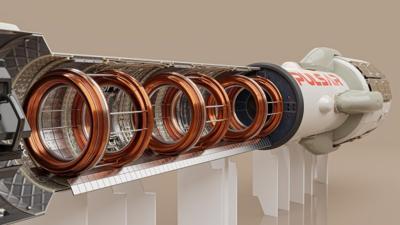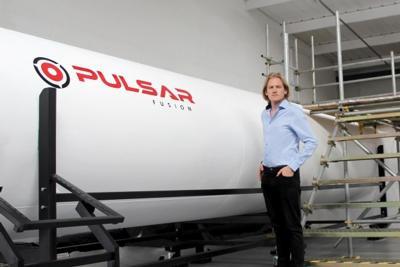Climbing the Kardashev Scale
U.K. aerospace concern Pulsar Fusion has undertaken construction of the largest practical nuclear-fusion rocket engine yet built. When fired in 2027—presuming the company’s development timetable proves accurate—the engine’s eight-meter fusion chamber will generate exhaust speeds in excess of 500,000-miles-per-hour and temporarily supersede the sun as the hottest place in the solar system.

Researchers at Pulsar Fusion seek to see the fusion engine’s core reach several-hundred-million degrees at the instant the final plasma shot is fired in the chamber.
Pulsar Fusion CFO Dr. James Lambert stated: “The difficulty is learning how to hold and confine the super-hot plasma within an electromagnetic field. The plasma behaves like a weather system in terms of being incredibly hard to predict using conventional techniques."
Dr. Lambert added: Scientists have not been able to control the turbulent plasma as it is heated to hundreds of millions of degrees and the reaction simply stops. This unpredictability is attributed to the science Magneto-Hydro Dynamics (MHD) and Gyrokinetics, the state of the plasma is changing all the time. Scientists can get to fusion temperatures, as recently demonstrated at California's Lawrence Livermore Laboratory, and this will be achieved again more often going forward, but small improvements can dramatically improve the results in our favor.”
Magnetohydrodynamics is a model of electrically conducting fluids that treats all interpenetrating particle species together as a single continuous medium.
Gyrokinetics is a theoretical framework by which researchers study plasma behavior on perpendicular spatial scales comparable to the gyroradius and frequencies much lower than the particle cyclotron frequencies. Subject particular scales have been experimentally shown to be appropriate for modeling plasma turbulence.
Pulsar Fusion has teamed with New Jersey-based Princeton Satellite Systems in the hope of extrapolating data from the world-record-holding PFRC-2 reactor, feeding said data into supercomputer simulations for purpose of better predicting the manner in which super-hot plasma behaves under electromagnetic confinement, and devising means by which to guide and improve the design of Pulsar Fusion’s rocket engine prototype.

Pulsar CEO Richard Dinan set forth: “Our current satellite engines we make today at Pulsar, produce up to 25-miles-per-second in exhaust speeds. We hope to achieve over ten-times that with fusion.”
Should Pulsar’s rocket engine achieve fusion temperatures during its planned demonstration to aerospace partners in 2027, the technology would herald the halving of mission times to Mars, the reduction of flight time to Saturn from eight-years to only two, and the empowerment of humanity to leave its home solar system.
Mr. Dinan concluded: “We will be keeping our existing partners up to date at every step, even as we begin early firings in 2025; we will be able to know if we are on the right track. Pulsar would then need to conduct a test firing in orbit. To the fusion community, AI truly does have the potential to allow us to achieve engines capable of interstellar space travel.”
Established in 2013 as Applied Fusion Systems, Pulsar Fusion develops nuclear-fusion space propulsion systems. In 2022, the U.K. Space Agency awarded Pulsar Fusion funds with which to research nuclear electric propulsion. The monies appear to have been wisely invested.
 NTSB Final Report: Rutan Long-EZ
NTSB Final Report: Rutan Long-EZ ANN FAQ: Turn On Post Notifications
ANN FAQ: Turn On Post Notifications Classic Aero-TV: ICAS Perspectives - Advice for New Air Show Performers
Classic Aero-TV: ICAS Perspectives - Advice for New Air Show Performers ANN's Daily Aero-Linx (06.28.25)
ANN's Daily Aero-Linx (06.28.25) Aero-News: Quote of the Day (06.28.25)
Aero-News: Quote of the Day (06.28.25)




